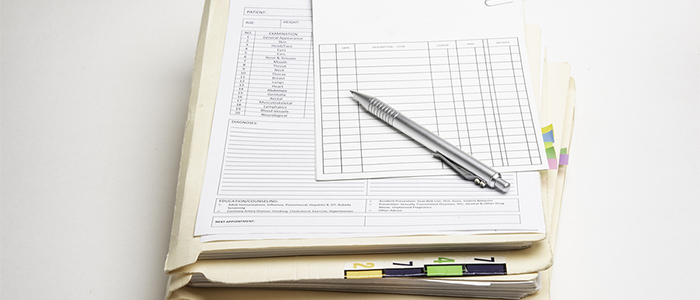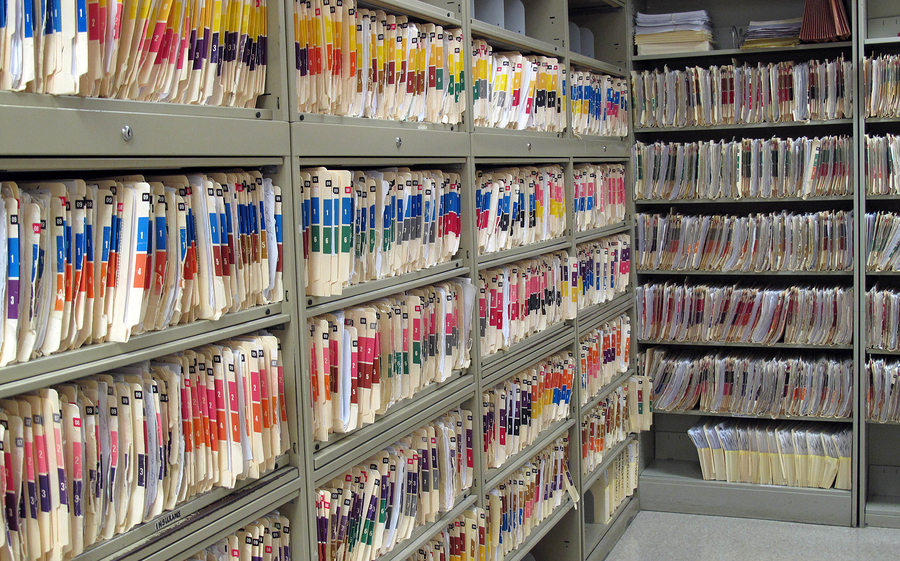This rule is not intended to prevent or restrict the provider from furnishing records of medical treatment and condition to the medicaid covered individual. (n) except as otherwise provided in paragraph (d)(2) of this rule, when the medicaid covered individual is covered by medicare, in addition to other third party payers, medicaid is the. Posted: jul 01 2014 revised: jul 01 2014 introduction electronic health records (ehrs) resources 1. introduction as health information continues to transition from paper to electronic records, it is increasingly necessary to secure and protect it from inappropriate access and disclosure. if patients' data is lost or stolen, it is equally important to notify them and hold the people or. The physician was in control of the care and documentation processes and authorized the release of information. patients rarely viewed their medical records. a second limitation of the paper-based medical record was the lack of security. access was controlled by doors, locks, identification cards, and tedious sign-out procedures for authorized.
Privacy, security, and electronic health records your health care provider may be moving from paper records to electronic health records (ehrs) or may be using ehrs already. ehrs allow providers to use information more effectively to improve the quality and eficiency of your care, but ehrs will not change the privacy protections or security. You must secure paper records that include protected health information. you must immediately report all incidents that may involve the loss or theft of any such paper records. call: 203. 432. 5919 to report potential breaches medical records and phi must be located and used so as to minimize incidental disclosure of phi. Photo: pexels the first hint of a transition from paper medical records to electronic records came after the american recovery and reinvestment act (arra), passed in 2009. this required healthcare providers across the united states to modernize internal record systems and create a centralized database, making it securing paper medical records easier for doctors, physicians, and nurses to access
Protect Paper Records With Sensitive Information Uhealth

Paperbased Versus Electronic Medical Record Keeping
The article “paper trails: living and dying with fragmented medical records” illustrates the risks of these complex cases and really highlights ways those in the record management industry can help. Healthcare cybersecurity is a growing concern. the last few years have seen hacking and it security incidents steadily rise and many healthcare organizations have struggled to defend their network perimeter and keep cybercriminals at bay. 2015 was a record year for healthcare industry data breaches. more patient and health plan member records were exposed or securing paper medical records stolen in 2015 than in the previous. Paper records are fragile, so make sure to protect them by storing documents: away from air conditioners, heaters, water pipes, and direct natural and ultraviolet light at least 3 inches above the ground to prevent water damage in temperatures between 65 and 70 f and 55% relative humidity. In all the discussion about privacy security, it is essential to take care of the basics. in fact, hipaa and the joint commission require it. they specify that medical records must be adequately protected from fire and water damage, erroneous destruction and outright theft. five steps to protecting paper medical records.
About Protected Health Information Phi

Protect paper securing paper medical records records with sensitive information sensitive information on paper is the same as sensitive information on a computer. both need to be protected from unauthorized access or disclosure and should be treated with caution and discretion. If your paper is accepted, you must include a link on your preprint to the final version of your paper. if you have any questions about publishing with sage, please visit the sage journal solutions portal. 1. what do we publish? 1. 1 aims & scope 1. 2 article types 1. 3 writing your paper. 2. editorial policies 2. 1 peer review policy 2. 2 authorship. The contractor registration requirement does not apply to contractors working solely on public works projects awarded prior to april 1, 2015. some exceptions allow contractors to bid on federally funded projects or submit joint venture bids without first being registered, as long as the contractors that are parties to the joint venture and the joint venture are registered at the time the.
5 Steps To Protecting Medical Records

safety in electronic medical records bettyann pidcoe hca 210 september 7, 2014 andrea engle confidentiality in electronic medical records in the health care industry patient medical records has gradually moved from paper to the computer as electronic medical securing paper medical records records (emr). in past years doctors kept patient health records in file folders in cabinets that took up a great deal of room in the. Bottom line: if the records aren’t breached, nothing happens. however, providers shouldn’t let this fact lull them into a false sense of security. accrediting bodies such as the american hospital association do engage in audits (both scheduled and surprised), and penalties for non-compliance include losing licensure and losing ability to file claims to be paid.
The answer is yes, but it comes with a caveat: storing paper records securely requires a lot more work, physical space, and effort than ehrs—and even after all that, the risk of hipaa violations is still higher with paper records. Capital shredder corp offers various nsa (national security agency) approved shedder options that can handle the volume of shredding you need and guarantee privacy. using a heavy-duty shredder machine will allow you to keep up with the termination of paper records without worry.
These are just some of the challenges that are presented to practices relying on paper-based client files and/or medical records. understanding these roadblocks is an important step towards reducing labor costs and improving quality of care for your patients, while keeping your records secure and accessible. Ensure that all of your paper medical records are protected from basic environmental hazards. this includes: storing them away from air conditioners, heathers, and sources of water; and ensuring that they are stored at temperatures between 65 and 70° f at 55% relative humidity. 3. apply a retention schedule.
Policy Guidelines For Physical Security Health

This allows for easy retrieval, and you may be able to store the paper records in a secure off-site location. having an external location to store your paper records can be costly when doing it on your own. document-storage companies give you a range of services to choose from that may fit more easily into your budget. A records management consultant can identify risk exposure, in terms of location and format of your medical records, and make recommendations to reduce it. before buying specialized hardware or software, invest in a needs assessment. 2. 0 examine your storage. paper records are fragile, so make sure to protect them by storing documents:. You must secure paper records that include protected health information. you must immediately report all incidents that may involve the loss or theft of any such paper records. call: 203. 432. 5919 to report potential breaches; medical records and phi must be located and used so as to minimize incidental disclosure of phi.

Made to protect the medical privacy of persons who have phi on file with the college. this is done by protecting paper and electronic records as well as other health information through physical, administrative and technological means directed at maintaining the integrity and security of those records. goal: secure and protected health information. mobile devices enable doctors to have access to medical records and critical lab results, in real-time, while at a patient’s bedside this leaves little room for error in fact, one study showed that mobile devices cut medication administration errors by 61 percent and preventable medical errors by 46 percent smartphones are also improving In any conversation about how to store your paper medical records, the place to start is best practices for the physical location you’ll keep your records in. in order to maintain hipaa compliance with your paper record storage, you need to think about physical safeguards. Sensitive information in any format must be transported in a secure, approved manner. administrators are responsible for supervising and approving transport of sensitive information. shred paper with pii/phi before discarding. do not throw in trash bins. for the medical campus, recycle bins are available from environmental services.
Secure storage. we are moving into an age of digital filing for safekeeping and more straightforward navigation. however, there are some cases where paper medical records are still necessary. when protecting the information in these records, you need to ensure that the way securing paper medical records you store them is secure. As health information continues to transition from paper to electronic records, it is increasingly necessary to secure and protect it from inappropriate access and disclosure. if patients' data is lost or stolen, it is equally important to notify them and hold the people or companies at fault accountable. May 29, 2020 · if you have questions about securing hipaa-regulated research data at iu, email securemyresearch@iu. edu. securemyresearch provides self-service resources and one-on-one consulting to help iu researchers, faculty, and staff meet cybersecurity and compliance requirements for processing, storing, and sharing regulated and unregulated research data; for more, see about securemyresearch. Papermedicalrecords can be difficult to decipher both paper and electronic record storage systems have some security vulnerabilities. electronic records are susceptible to hackers and.